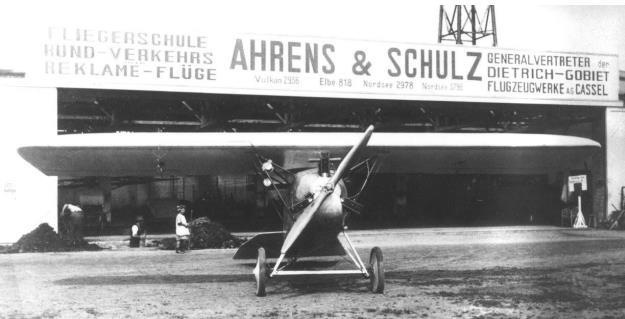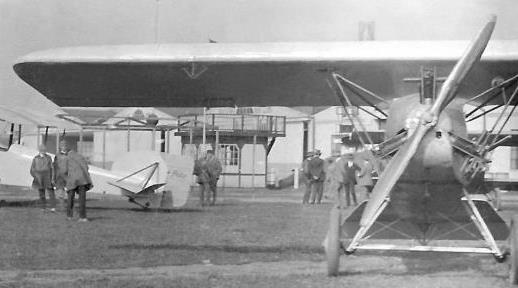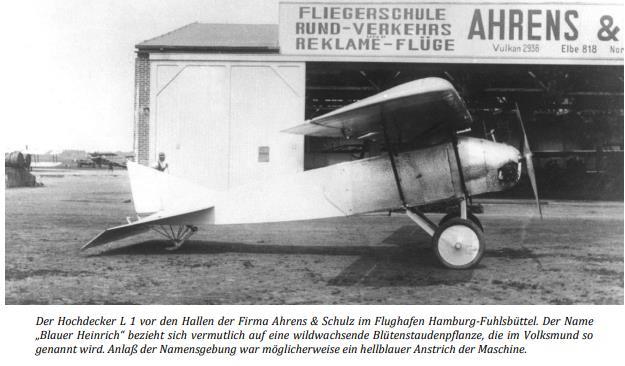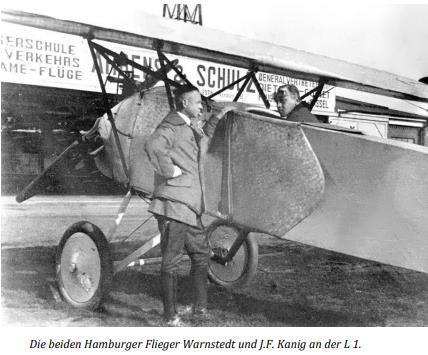Building specification Ahrens & Schulz L 1 "Blauer Heinrich"
(taken from Flugsport No. 7/1925, p. 144 f)
The aircraft is built as a sports or training aircraft, students and teachers sitting one behind the other, the
control is designed as a stick control, but handwheel control can also be installed if desired. In order to be able to fly the aircraft with a passenger, the front controls are set up for removal.
The so called "Parasol" arrangement of the wing above the hull gives the most favorable visibility. On the outside of the lower edge of the fuselage, two tension struts run one behind the other on both sides, and on the inside the cockpit struts are used to connect the wing to the fuselage.
The hull, with a rectangular cross-section and streamlined shape, is a welded, cellonized canvas covered hull, tubular steel construction. The stabilizer is connected to the fuselage by two struts and by two cables to the keel surface . The elevator is attached to the stabilizer and is connected by a tube. The unbalanced control surfaces are made of steel tubing covered with linen and are actuated with cables running over rollers. The landing gear has the normal design and is made of profiled tubular steel, with the front strut field crossed with ropes.
The take-off run of the machine is about 50-70 m. Maneuverability is very good, the aircraft is tight in turns and has no tendency to slip.
A 50 hp air-cooled motor is usually installed; however, a correspondingly more powerful motor can also be used, between 50 and 80 hp can be installed.
| Type |
Two seat trainer |
| Engine |
1 Anzani 50 hp 3-cylinders or Haacke HFM 3 |
| Dimensions |
Length , height , span , wing area , |
| Weights |
Empty , loaded , max. take off weight |
| Performance |
Max.. speed , cruising speed , range , endurance , service ceiling , climb |
| Type |
Werk.Nr |
Registration |
History |
|
|
|
Built in 1925, designed by Paul Lange |



